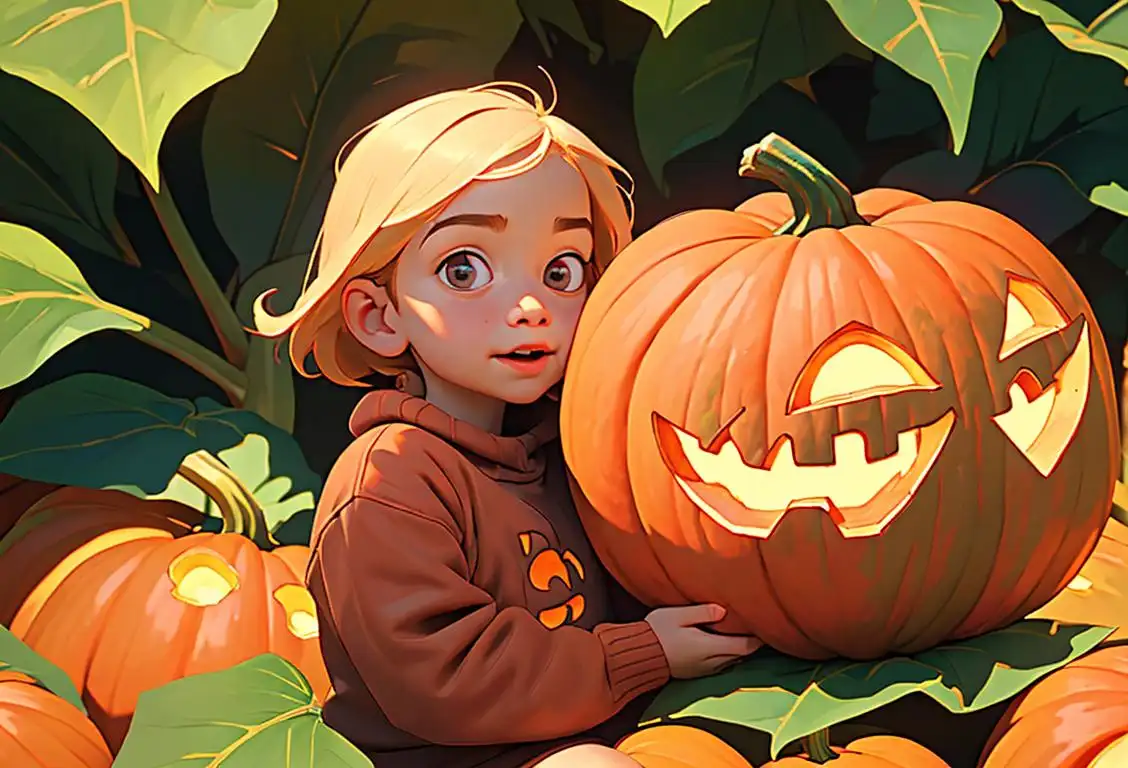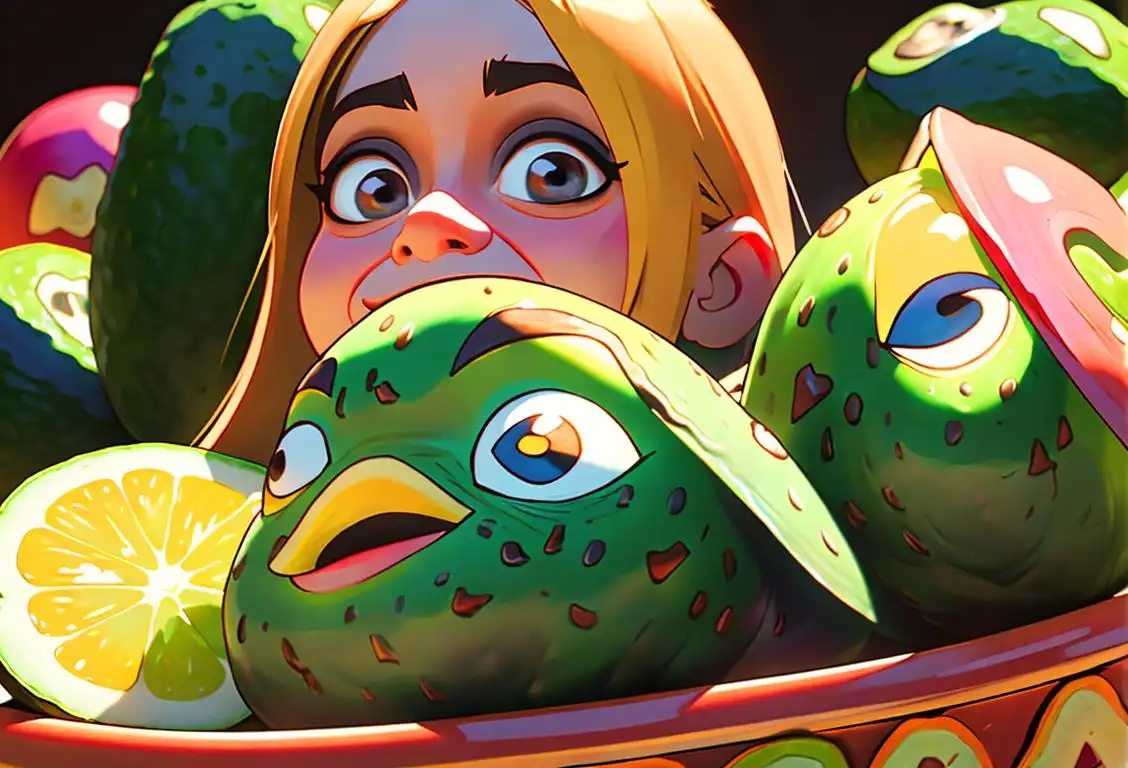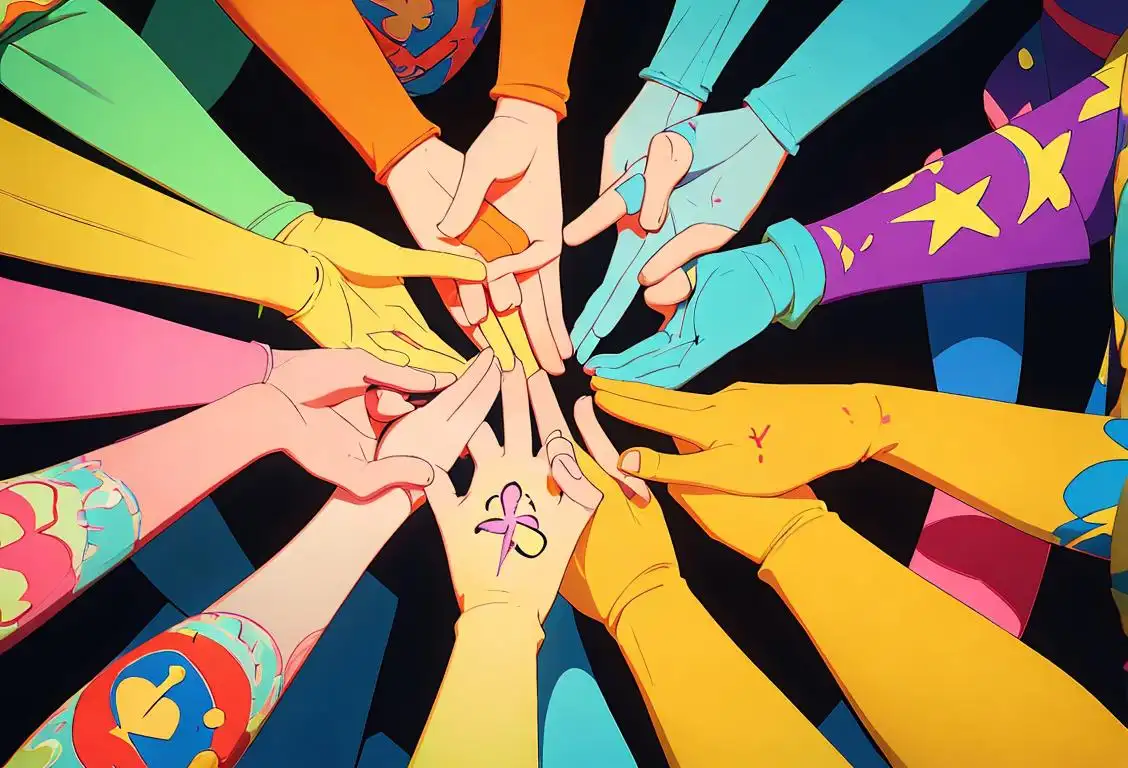National Smiles Day

Did you know that there's a day dedicated to smiles? That's right, National Smiles Day is here to bring some cheer and happiness to your day! Smiles have a magical power to brighten up someone's day and make the world a little brighter. So, let's dive into the history of this delightful celebration and explore all the reasons why it's so important to share those pearly whites!
When is Smiles Day?
It's national smiles day on the 1st June.
The Origins of National Smiles Day
You might be wondering who came up with the idea of dedicating a day to smiles. Well, we couldn't find any ancient scrolls or historical documents pointing to the exact origins, but we like to believe that National Smiles Day was started by a happy-go-lucky group of individuals who realized the incredible value of spreading joy through a simple act: smiling.
It's fascinating to observe how smiles have evolved through the ages. From the stone-carved smiles in ancient sculptures to the iconic Mona Lisa smile, our human fascination with expressing happiness hasn't changed. In today's digital age, emojis have also become a means of spreading virtual smiles across the internet. 😊
The Power of Smiles
A smile is like a ray of sunshine on a cloudy day. It has the power to make you feel better, boost your mood, and even reduce stress. Did you know that it takes fewer face muscles to smile than it does to frown? So, why not choose the path of least resistance and share your radiant smile with the world?
Smiles are highly contagious too! Have you ever noticed how hard it is to resist smiling back when someone flashes you a genuinely warm and friendly grin? It's almost impossible not to reciprocate with a smile of your own.
Celebrating National Smiles Day
Now that you know the significance of smiles, it's time to celebrate National Smiles Day in style! Here are a few delightful ways to spread smiles:
- Surprise your loved ones with a handwritten note or a sweet message to brighten their day.
- Organize a smile-themed potluck with friends or colleagues. Each person can bring a dish that makes them smile, and you can savor the joy together.
- Engage in activities that make you smile, whether it's playing sports, exploring nature, dancing, or even watching your favorite comedy show.
Remember, National Smiles Day is all about sharing the happiness and making the world a happier place, one smile at a time!
History behind the term 'Smiles'
1618
The birth of the term 'smiles'
The term 'smiles' originated in the English language in the year 1618. It is a noun derived from the verb 'smile' which refers to the facial expression denoting happiness or amusement. The term has its roots in the Old English word 'smilian', meaning 'to laugh, to rejoice'. Since its inception, the term 'smiles' has played a crucial role in expressing joy and positivity.
4000 BCE
Earliest Depiction of Smiles
The history of the term 'smiles' can be traced back to around 4000 BCE when the earliest known depiction of smiles was discovered in ancient Mesopotamia. A bas-relief sculpture titled the 'Standard of Ur' showcased two opposing sides depicting scenes of war and peace. On the peace side, figures with upturned mouths and curved lines were interpreted as smiles. This early representation suggests that smiles have been a symbol of joy and happiness for thousands of years.
1972
The Creation of Smileys
In 1972, American graphic designer Harvey Ross Ball created the world's first smiley face. Ball was commissioned by an insurance company to design a happy face that would lift the spirits of their employees. The simple yellow circle with two dots for eyes and an upturned curve for a smile became an instant hit.
14th century
Emergence of the word 'smile'
The term 'smile' can be traced back to the 14th century, derived from the Middle English word 'smilen' meaning 'to smile' or 'to laugh in a gay or lively manner'. This Old English word had its roots in the Proto-Germanic verb 'smiljan', which meant 'to laugh, smile'.
1616
The Birth of Smiles
The term 'smiles' emerged in the English language during the 17th century. It is derived from the Middle English word 'smilen', meaning 'to smile' or 'to laugh'. This word, in turn, can be traced back to the Old English word 'smylian', which meant 'to grin or smile'. The concept of smiling and its expression has been a part of human communication for centuries.
1869
The Invention of the Word 'Smile'
In 1869, the word 'smile' was formally recognized as a noun and verb in the English language. It was derived from the Middle English word 'smilen' and the Old English word 'smilian,' which both meant 'to smile.' The term 'smile' is used to describe the facial expression of happiness or amusement, characterized by the curving of the lips and often accompanied by the raising of the cheeks.
4000 BCE
The Early Origins
The concept of smiling has been traced back to ancient civilizations such as Mesopotamia and Egypt, where people used various expressions to convey happiness. In Mesopotamia, around 4000 BCE, smiling was depicted in clay sculptures and reliefs as a sign of joy and happiness. Similarly, in ancient Egypt, smiling was associated with the afterlife and considered a sacred expression.
1860
The Birth of a Smile
In the year 1860, the term 'smiles' was first coined. The word 'smile' originates from the Old English 'smilian,' which means 'to smile, laugh, or show amusement.' Smiling is a universal form of expressing happiness and pleasure, and the term 'smiles' became a way to describe these joyful expressions.
1850
The Birth of the Word
The term 'smiles' originates from the Old English word 'smile', which means 'to smile' or 'show happiness'. It can be traced back to the 1850s, where it emerged as a simple yet powerful term to describe the act of expressing joy through a facial expression. The concept of smiling has been observed in cultures throughout history, but it was during this time that the word 'smiles' started gaining popularity and entering everyday vocabulary.
1936
The Smiley Face
In 1936, the iconic 'smiley face' was born, forever linking the term 'smiles' to a visual representation of happiness. The original smiley face was created by Harvey Ross Ball, a graphic designer from Massachusetts, in response to a request from a local insurance company to boost employee morale. Ball's design, featuring a yellow circle with two simple eyes and an upturned curve for a mouth, quickly became a global symbol of positivity and joy. The increasing use of the smiley face further solidified 'smiles' as a term associated with happiness and cheerfulness.
17th Century
The Language of the Smiling Face
In the 17th century, a book titled 'Emblemata Amatoria' by Otto van Veen featured a collection of emblem illustrations accompanied by poetic texts. One of the emblems showcased a smiling face with the Latin motto 'Risus ab honesto, suo fine est Mos.' Meaning 'A laugh from an honest man has its own purpose.' This book further popularized the notion of smiles as a positive expression, reinforcing the significance of smiles across cultures.
2100 BCE
Smiling Gods in The Shang Dynasty
During the Shang Dynasty in ancient China (around 2100 BCE), smiling was often associated with religious deities. Many artifacts discovered from this period depict gods and goddesses with serene and smiling expressions. It was believed that by pleasing these deities with smiles, people could gain their favor and protection.
1982
The Birth of Emoticons
In 1982, Scott Fahlman, a computer scientist from Carnegie Mellon University, proposed using a combination of keyboard characters to convey emotions in online messages. He suggested using :-) to denote a smiley face and :-( for a frowning face. These character combinations, known as emoticons, quickly gained popularity among computer users to express emotions in text-based communication.
17th century
Expanding meanings of 'smile'
During the 17th century, the term 'smile' underwent a shift in meaning and expanded beyond laughter. Now it began to encompass a wider range of expressions associated with happiness, pleasure, and amusement. This evolution reflected the growing acknowledgment of the varied subtleties and nuances of facial expressions.
1936
Bringing Smiles to the Masses
In 1936, the iconic toothpaste brand Colgate launched their marketing campaign with the slogan 'A Brush with the Smiles.' This campaign aimed to promote dental hygiene and encourage people to embrace brighter smiles. This marked a significant moment in popularizing the term 'smiles' as a symbol of dental health and happiness.
1862
First Usage in Print
The term 'smiles' gained popularity and recognition in the English literature when it appeared in Charles Dickens' classic novel 'Great Expectations'. The book was published in 1860-1861 as a serial, and the term 'smiles' appeared in its final form in the first book edition released in 1862. Dickens used the term to describe the act of smiling, adding depth and emotion to his character descriptions.
1862
Incorporation into popular literature
In the year 1862, the term 'smiles' gained significant recognition when it was incorporated into popular literature. Notable authors, such as Charles Dickens, utilized the term in their works, effectively spreading its usage and embedding it within the cultural lexicon. Literature became a powerful medium for the term 'smiles' to gain popularity and become widely understood and appreciated as a universal expression of happiness.
Late 19th Century
Smiles in Art and Photography
During the late 19th century, the depiction of smiles became prominent in art and photography. Artists and photographers started capturing the beauty of smiles, showcasing the joy and positivity associated with them. Smiling subjects became a popular choice for portraits, as smiles were considered to enhance the overall appeal and charm of an individual's image.
1960s
The Cultural Impact
During the counter-cultural movements of the 1960s, 'smiles' took on a broader cultural meaning. It became a symbol of peace, love, and universal happiness. The term was not only used to describe the physical act of smiling but also referenced a state of mind, an attitude, and a way of connecting with others. As the concept of 'smiles' grew beyond just a facial expression, it became synonymous with positive vibes and an optimistic outlook on life. The cultural impact of 'smiles' during this time further solidified its place in popular culture and everyday language.
1921
The invention of the smiley face emoticon
In 1921, the concept of expressing smiles took a significant leap forward with the invention of the smiley face emoticon. Harvey Ball, a commercial artist, created the iconic yellow circle with two black dots for eyes and a curved line for a smile. This simple symbol became universally recognized as a representation of happiness and transformed the way people communicated their emotions in written form, especially through digital platforms.
1902
Colonel Smiles and the Rise of Smiles
In 1902, the character Colonel Smiles was introduced in a series of popular silent films. Played by actor Harold Lloyd, Colonel Smiles became an iconic figure associated with happiness, cheerfulness, and laughter. The character's name further popularized the term 'smiles', gradually turning it into a recognized symbol of positivity and joy.
8th Century CE
The Rise of Smiling Portraits in Europe
In the 8th century CE, smiling began to gain prominence in European art. Previously, most portraits featured serious or stoic expressions. However, with the influence of Byzantine art, a new form known as the 'smiling portrait' emerged. This artistic shift reflected a growing appreciation for the emotional and joyful aspects of life.
1997
The Rise of Emoji
In 1997, a Japanese mobile phone company, NTT DoCoMo, introduced a set of 176 pictorial icons called 'emoji' (meaning 'picture character' in Japanese). These emojis enabled users to express a wide range of emotions beyond the traditional emoticons. The popularity of emojis soared, and they soon became a fundamental part of digital communication worldwide.
1862
The Term 'Smiles' Coined
The noun 'smiles' was first used in its modern form in 1862 by poet and novelist Lewis Carroll in his renowned work 'Alice's Adventures in Wonderland.' In the story, the Cheshire Cat famously tells Alice, 'I can't help that. We're all mad here. I'm mad. You're mad.' 'How do you know I'm mad?' asked Alice. 'You must be,' said the Cat, 'or you wouldn't have come here.' Alice didn't think that proved it at all, but the Cat went on: 'You see, a dog growls when it's angry and wags its tail when it's pleased. Now I growl when I'm pleased, and wag my tail when I'm angry. Therefore, I'm mad.' This whimsical dialogue presented the concept of smiles associated with happiness or mischief.
1950
The Smileys Arrive
The 1950s witnessed the emergence of the famous 'smiley face' symbol that has become synonymous with smiles. Created by commercial artist Harvey Ball in 1963, the iconic yellow smiling face with black eyes and a wide grin became a symbol of happiness and positivity. This playful image further solidified the term 'smiles' as a representation of joy.
Early 20th Century
Smiles in Advertising
In the early 20th century, the power of smiles was recognized in advertising. Advertisers began incorporating smiling faces in their campaigns to evoke positive emotions and create an association between their products and happiness. Smiling models were often used to promote various goods and services, emphasizing the idea that using or owning these products would bring joy and contentment.
19th century
Cultural significance of smiling
In the 19th century, the cultural significance of smiling gained prominence. The influential philosopher Charles Darwin explored the universality of facial expressions and argued that smiles were innate and served as a means of communication among humans. This breakthrough highlighted the importance of smiling as a universal human gesture.
1970
The rise of 'World Smile Day'
Founded in 1970 by Harvey Ball himself, 'World Smile Day' was established to encourage acts of kindness and bring smiles to people's faces worldwide. This day, celebrated annually on the first Friday of October, emphasizes the immense power of a smile and its ability to uplift spirits and foster positivity. 'World Smile Day' has become an international event that unites people in spreading happiness and creating a more cheerful global community.
19th Century
The Kodak Smile
The term 'smile' took on a new meaning in the 19th century with the invention of photography. George Eastman, the founder of Kodak, popularized the phrase 'Say cheese' to make people smile for photographs. This phrase eventually became synonymous with capturing happy moments and the act of smiling for the camera.
1995
Digital Smiles
With the rise of the internet and digital communication, 'smiles' took on a new form in the late 20th century. The term became associated with using emoticons, especially the :) and :D symbols, to convey a smiling expression in online conversations. This virtual evolution of 'smiles' allowed people to express happiness and convey emotions across the digital landscape.
1961
The Creation of the Smiley Face
In 1961, commercial artist Harvey Ross Ball was commissioned to create a simple and effective image to promote goodwill and boost employee morale. He came up with the iconic 'smiley face', a yellow circle with two dots for eyes and a gentle arc for a mouth, resembling a smiling face. The creation of the smiley face symbolized the power and universality of smiles as a form of non-verbal communication.
20th century
Psychological and physiological research on smiles
In the 20th century, scientific studies began delving into the psychological and physiological aspects of smiles. Researchers identified different types of smiles, such as the Duchenne smile, which involves genuine happiness with the activation of specific facial muscles. This research helped understand the role of smiles in social interactions and emotional well-being.
1970s
The Smiley Face Craze
The 1970s witnessed a cultural phenomenon known as the 'smiley face craze.' The iconic yellow smiley face, with its simple design featuring a bright yellow circle, black oval eyes, and a curved mouth, became a symbol of happiness and positivity. It gained popularity through its widespread use on various merchandise, from t-shirts to stickers, and became a recognizable symbol of the era.
2010
World Emoji Day
In 2010, Jeremy Burge, the founder of Emojipedia, established World Emoji Day on July 17th to celebrate the impact of emojis on modern communication. This global celebration acknowledges the significant role emojis play in expressing emotions, enhancing online conversations, and bridging the gap in cross-cultural communication.
1990s
The Rise of Emoticons
With the advent of digital communication in the 1990s, the term 'smiles' expanded its reach even further through the rise of emoticons. Emoticons are textual representations of facial expressions, serving as a way to convey emotions in online conversations. Commonly used emoticons, such as :) or :-), represent a smiling face and have become ubiquitous in online communication. As more people embraced the use of emoticons, 'smiles' became ingrained in internet culture and took on a new dimension of expressing happiness in the digital realm.
1963
Creation of the 'Smiley' Symbol
In 1963, commercial artist Harvey Ross Ball created the iconic 'smiley face,' a simple yellow circle with two black dots for eyes and a curved line representing a smile. Originally commissioned to boost employee morale for a company, the design gained immense popularity and quickly became a widely recognized symbol of happiness and positivity. The 'smiley face' has since become a ubiquitous image, appearing on various products and becoming a symbol of cheerfulness in popular culture.
1999
World Smile Day
World Smile Day was created by Harvey Ball, the designer of the 'smiley face,' in 1999. The annual celebration occurs on the first Friday of October and aims to spread acts of kindness and simple acts that bring smiles to people's faces. Inspired by his creation's global impact, Ball wanted to dedicate a day to remind people of the power of a genuine smile and its ability to make a positive difference in the world. Today, people around the globe participate in World Smile Day, promoting goodwill and sharing smiles.
20th Century - Present
The Science of Smiling
Throughout the 20th century, research on smiling and its impact on human psychology and well-being gained significant attention. Studies have shown that smiling can improve mood, reduce stress, and even boost the immune system. Today, the power of a smile is widely recognized, and it is considered a universal language of humanity.
1999
Emoticons in digital communication
In the late 1990s, digital communication platforms experienced a boom in popularity, leading to the integration of emoticons or 'smileys'. These keyboard characters and symbols, such as ':)', ':D', and ':-)', were used to convey emotions visually in text-based conversations. The inclusion of emoticons revolutionized the way people expressed themselves online, allowing for more nuanced and contextually rich communication, and further cemented the significance of smiles in digital interactions.
21st century
Smiling's impact on mental health and well-being
In the 21st century, the significance of smiles in promoting mental health and well-being gained recognition. Smiling has been found to reduce stress, boost mood, and enhance overall happiness. As a result, various initiatives promoting kindness, positivity, and smiling emerged, emphasizing the positive influence that a simple smile can have on individuals and society as a whole.
Present Day
Continued Relevance
Today, 'smiles' remains a term that encapsulates the universal language of happiness. It serves as a reminder of the power of a smile and how it can positively impact our interactions with others. The term has continued to evolve alongside advancements in technology and communication, finding new forms of expression in memes, GIFs, and even virtual reality. 'Smiles' endures as both a word and a concept that unites people across cultures, reminding us of the importance of spreading joy and positivity in our daily lives.
2020
Smiles Amidst Challenges
The year 2020 will be remembered as a challenging time for the world due to the COVID-19 pandemic. However, amidst the difficulties, the impact of smiles remained significant. With face masks covering people's mouths, the focus shifted to the eyes as a way to express joy and warmth. The term 'smizes' emerged, combining 'smile' and 'eyes,' highlighting the importance of smiling with our eyes during these unprecedented times.
1999
World Smile Day
In 1999, the first World Smile Day was celebrated on the first Friday of October. The idea behind this international observance, initiated by Harvey Ball, was to encourage acts of kindness and bring smiles to people's faces. World Smile Day serves as a reminder of the positive impact smiles can have on individuals and society as a whole, emphasizing the importance of spreading joy and positivity.
Present Day
The Symbolic Value of Smiles
Today, smiles have transcended their linguistic origins and have become universal symbols of happiness, friendliness, and approachability. A smile has the power to convey emotions without the need for words, making it a powerful tool for human connection and social interaction. The symbolic value of smiles is embraced in various aspects of life, including personal relationships, professional settings, and social media platforms.
Did you know?
Did you know that smiling is not only contagious but also has health benefits? Studies have shown that smiling can lower your blood pressure, reduce pain, and even strengthen your immune system. So, keep those smiles coming to stay healthy and happy!Tagged
awareness fun loved onesFirst identified
7th October 2016Most mentioned on
1st June 2020Total mentions
43Other days
Compliment Day
Cheese Pizza Day
Pumpkin Day
Medal Of Honor Day
Guac Day
Foundation Day
Suicide Prevention Day
Memorial Day
Cancer Survivors Day
Bacon Day









